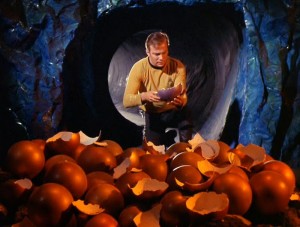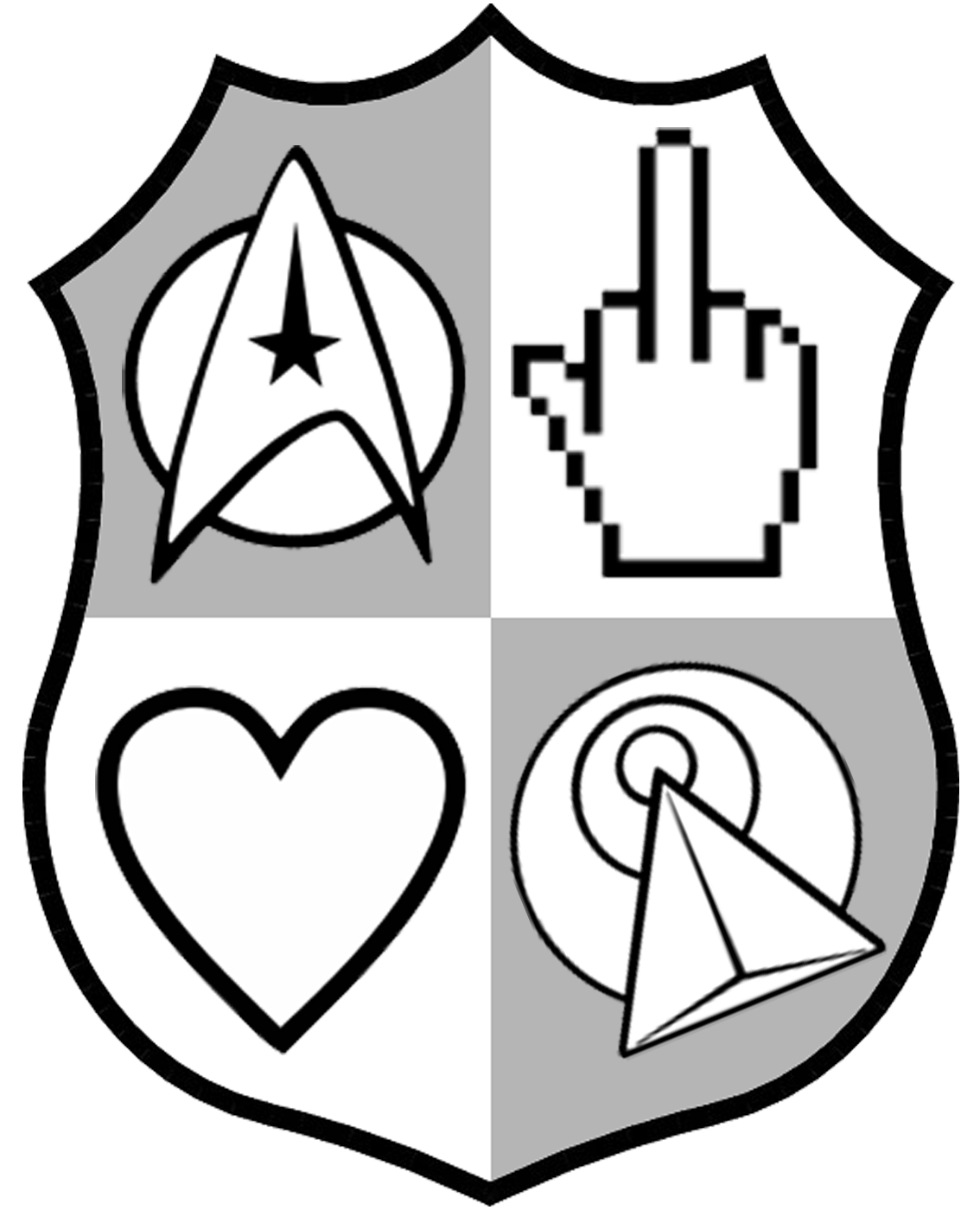Ari
March 9, 2016
Episode 25 – TOS 1×25: “The Devil in the Dark”
So here are some things I have learned about mines from a lifetime of sci-fi and murder mystery consumption:
- stay out of mines; mines are trouble
- if you have to go into a mine, use the buddy system
- if you lose sight of your buddy, return to the surface immediately
- if you hear weird noises not easily explained by normal mine-type activities, return to the surface immediately
- if you have lost sight of your buddy, are hearing weird noises and a bunch of people have disappeared in or near this mine really, really recently? return to the surface immediately, at a dead run if at all possible; forswear all mines (and caves) forever
- see #1
In this episode, apparently nobody knows about the Cardinal Rules of Mines, because we open with a bunch of space miners ignoring every last one of them. Apparently some kind of monster has been killing (taking?) miners – 50 of them, as we join our not-long-for-this-world space miners – but they still definitely think it’s a good idea to leave one guy to guard the mining equipment armed with nothing but a class 1 phaser which in previous encounters has done precisely nothing against the mine-monster, the titular devil in the dark. Apparently the miners are banking on the imminent arrival of the Enterprise to save them and their mine, but sadly, help will not arrive in time to save poor, poor Sorry-Dude-But-Somebody-Has-to-Stand-Guard, who we see bite it in the first minute and a half of the cold open.
Of course, even our brave crew don’t have much luck with the monster at first – in fact, Kirk & Co don’t even seem to believe the monster exists! Which seems a little strange, given the 50 missing-probably-dead miners, but idk, maybe running off with a duffel bag full of space minerals is a real problem in 23rd century mines. Instead, what our good captain and his first officer first do is stand around, look skeptical, and fondle the mysterious, geological oddity the chief miner has displayed, totally inconspicuously, on his desk – a smooth, perfectly spherical, pure silicone ball – apparently the new level they just reached with their machines is full of them. And yes, this episode is equally full of ball jokes. Sorrynotsorry.
The above absurdity aside, this is actually a really great, classic episode of Star Trek. It’s a logic puzzle, really,where our heroes have to figure out what the monster is, what precipitated the sudden attacks after decades of incident-free mining, and why the monster – the Horta – was suddenly driven to kill. Because don’t be fooled: this is not a monster-of-the-week story. To stop the killing, Kirk, Spock and Bones have to step outside of their established body of knowledge, and solve a problem so alien and new that neither their usual problem-solving methods nor their highly advanced equipment can fully prepare them for it, or really help them. To win the day, our heroes have to totally re-think the definition of “life” as they know it. This episode gives us a situation where human beings (and half-Human beings, in the case of Spock) must grow and learn and depend upon the better angels of their natures in order to survive.

Suspend your disbelief and accept the hilarious 60s effects and the moments of extreme, committed scenery-chewing, and this story delivers a genuinely effective message: that life, and sentience, and intelligence, and people, in the purest sense, don’t always look like us, or anything you might expect, and that is not a requirement for someone to deserve your compassion, or your respect.
“If you can learn to feel for a Horta,” said Gene Roddenberry, about one of the most popular episodes of the Original Series, “you may also be learning to understand and feel for other Humans of different colors, ways, and beliefs.” And if that’s not the very essence of Star Trek, I don’t know what is.
Podcast: Play in new window | Download | Embed
Subscribe: Apple Podcasts | Email | RSS
Related Posts
-
Episode 85 – “Star Trek 6: The Undiscovered Country”
June 23, 2017
-
Episode 84 – “Star Trek 5: The Final Frontier”
June 14, 2017
